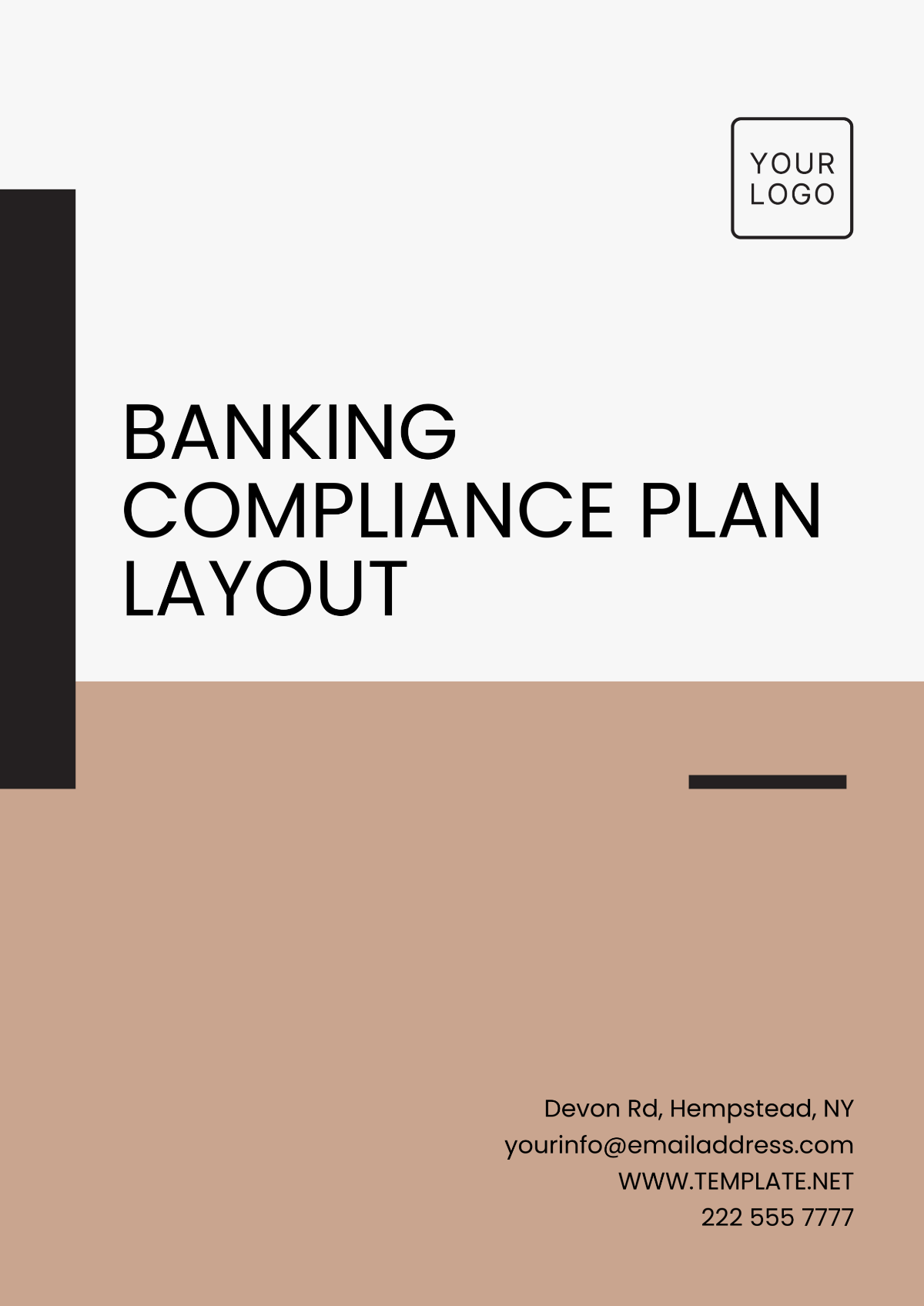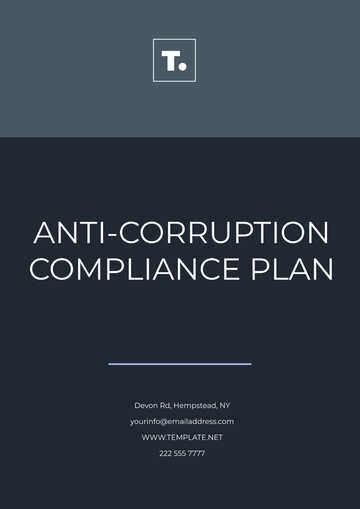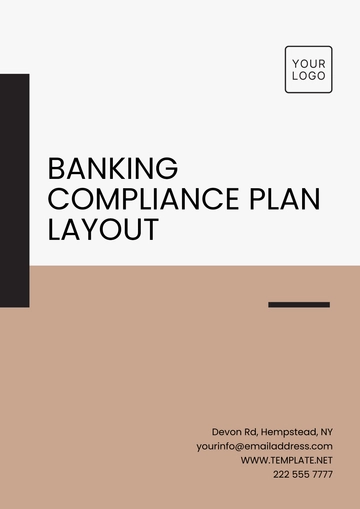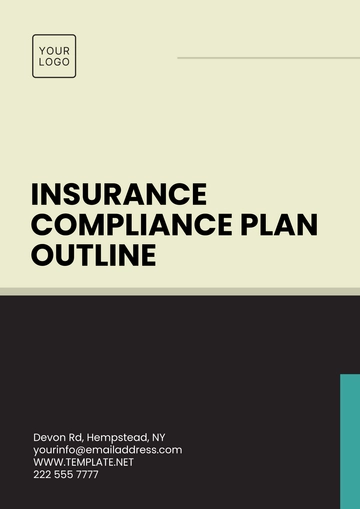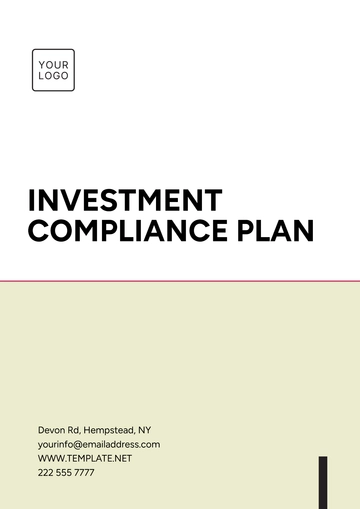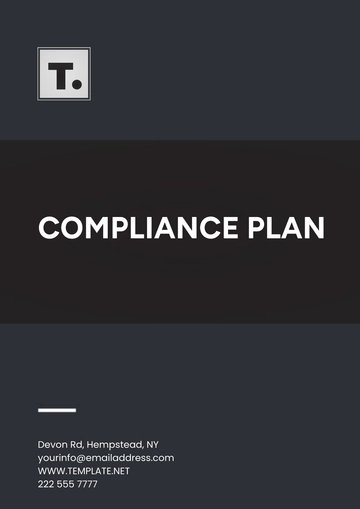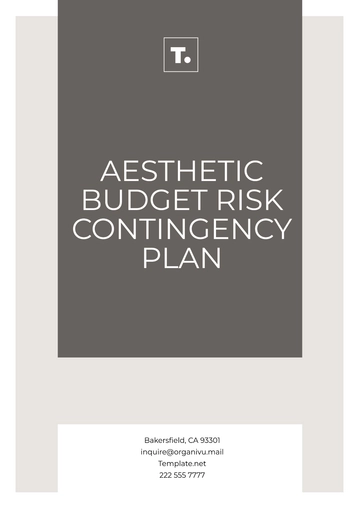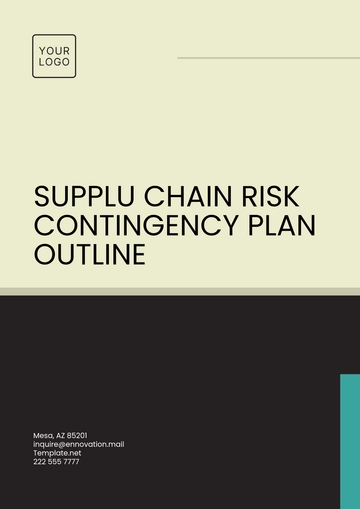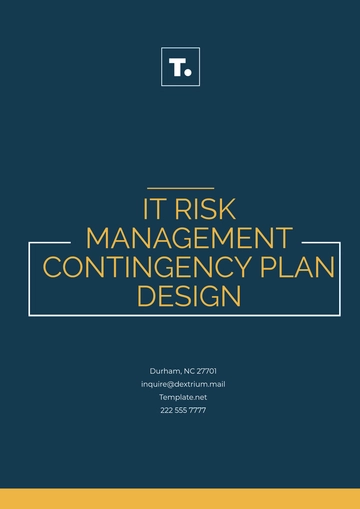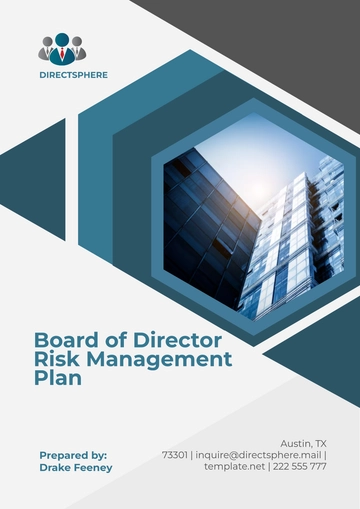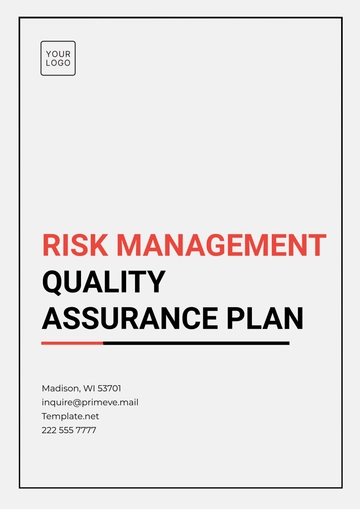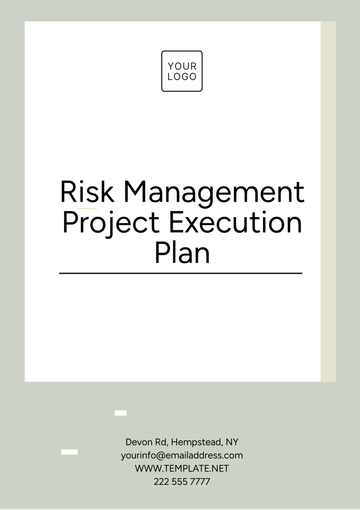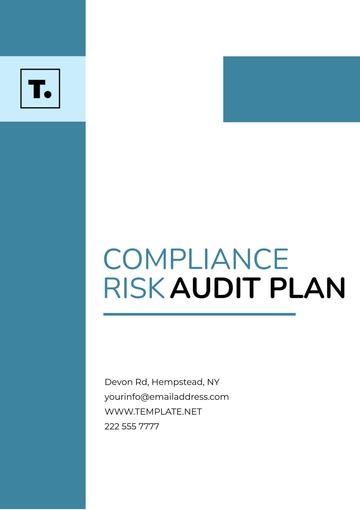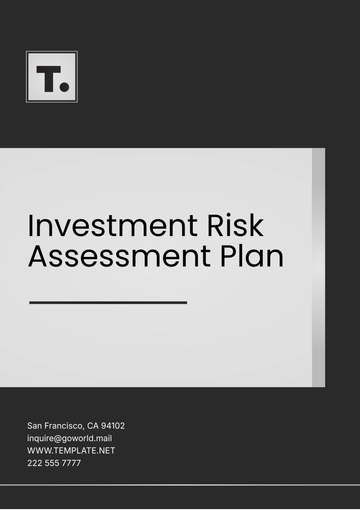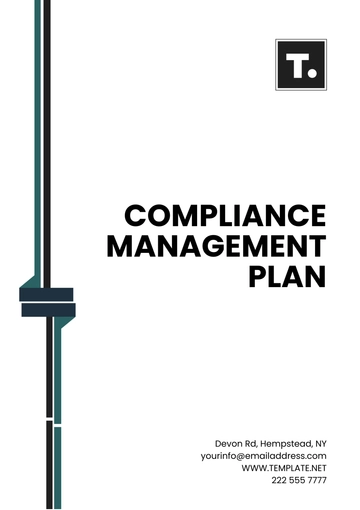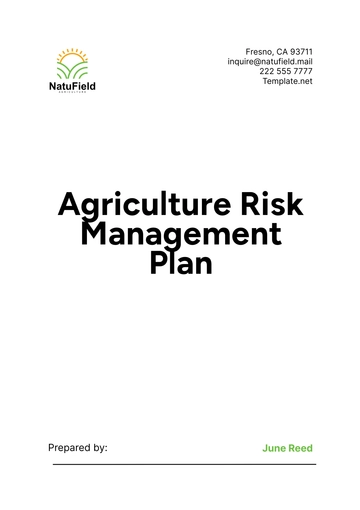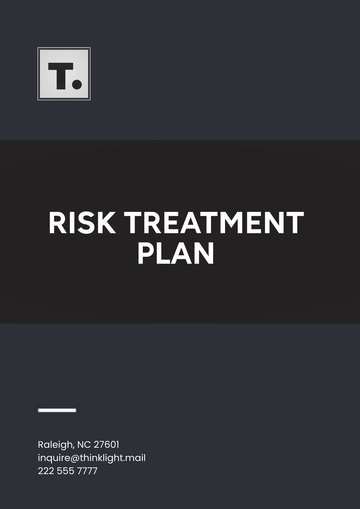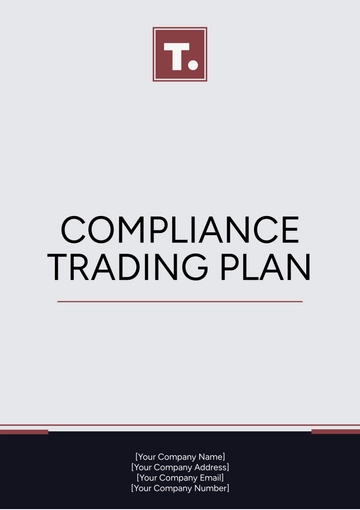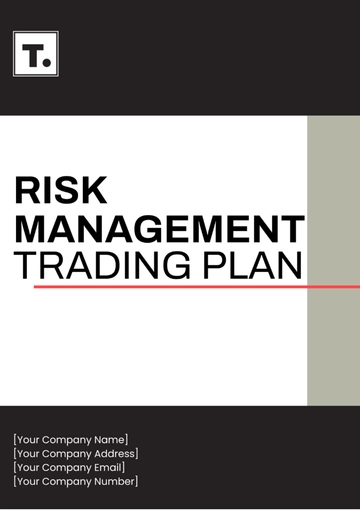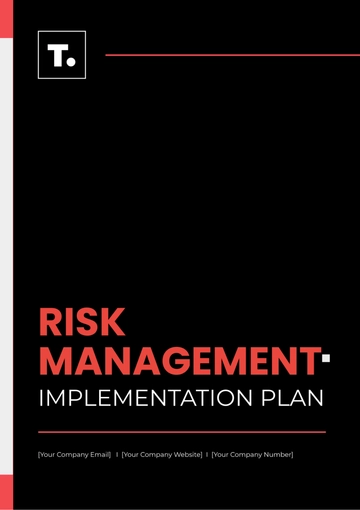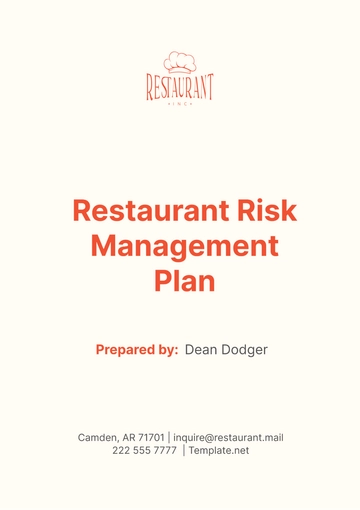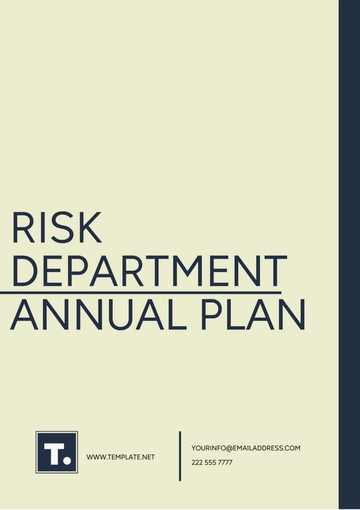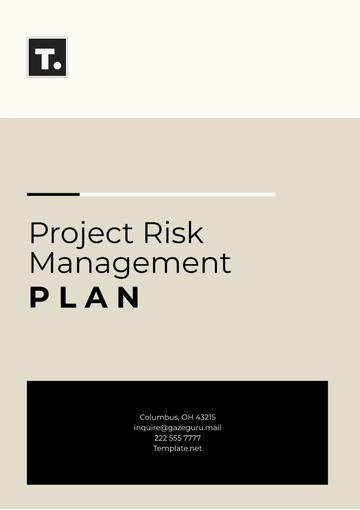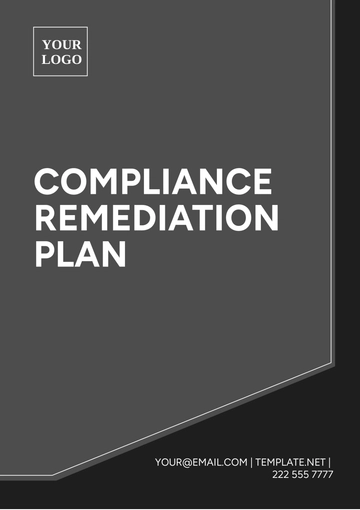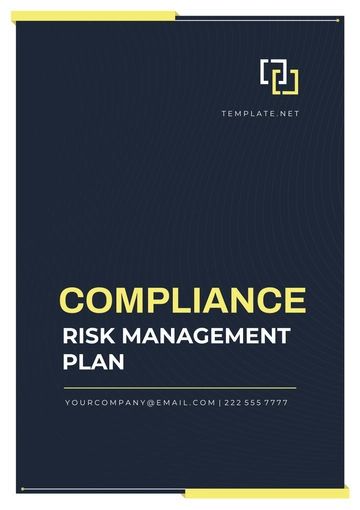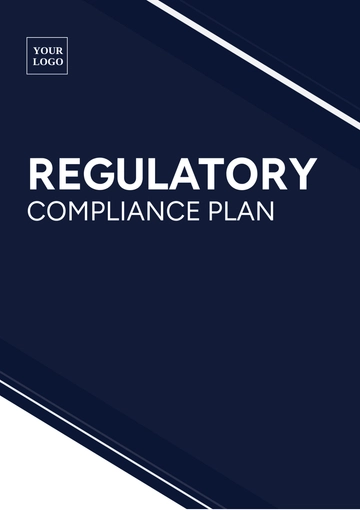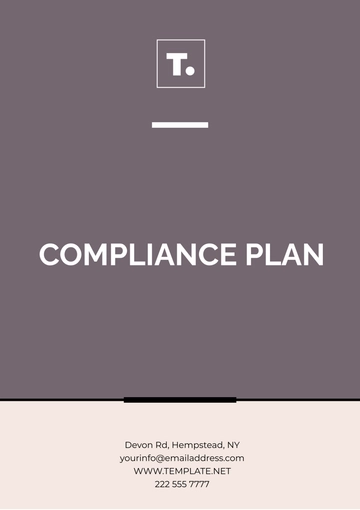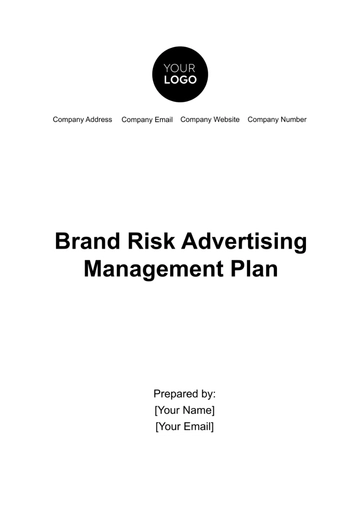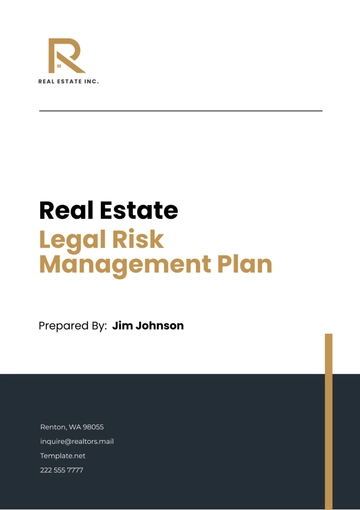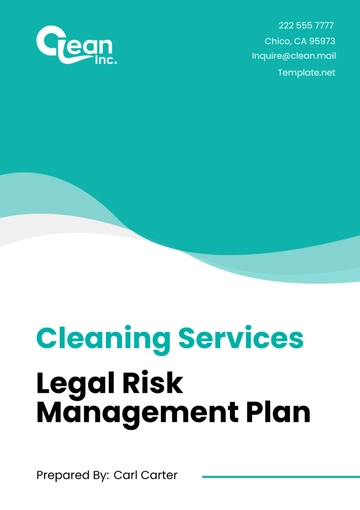BANKING COMPLIANCE PLAN LAYOUT
Date: [Date]
Prepared By: [Your Name]
I. Executive Summary
Purpose: Overview of the plan's objectives, goals, and importance in ensuring compliance within the banking industry.
[Insert Purpose of Compliance Plan]
Scope: The areas and regulations the compliance plan covers (e.g., anti-money laundering, consumer protection, fraud prevention, etc.).
[Insert Scope of Compliance Plan]
Key Goals: To reduce risks, maintain regulatory compliance, and uphold industry standards.
[Insert Key Goals of Compliance Plan]
II. Compliance Objectives
Regulatory Compliance: Ensuring adherence to all applicable banking laws, regulations, and guidelines.
[Insert Regulatory Compliance Goals]
Risk Management: Identifying and managing potential compliance risks within the bank.
[Insert Risk Management Strategy]
Internal Controls: Strengthening internal policies and procedures to mitigate non-compliance.
[Insert Internal Control Procedures]
Training and Awareness: Providing training for employees on banking regulations, ethics, and compliance standards.
[Insert Training Plan and Objectives]
III. Legal and Regulatory Framework
Relevant Regulations:
Dodd-Frank Act
Bank Secrecy Act (BSA)
Anti-Money Laundering (AML)
Know Your Customer (KYC) requirements
Consumer Financial Protection Bureau (CFPB) guidelines
Local and international regulations (e.g., GDPR, FATF standards)
[Insert Relevant Laws and Regulations Specific to Your Bank]
Regulatory Bodies:
Federal Reserve
Office of the Comptroller of the Currency (OCC)
Securities and Exchange Commission (SEC)
State Regulatory Authorities
[Insert Relevant Regulatory Bodies Specific to Your Location]
IV. Compliance Risk Assessment
Risk Identification: Identifying the risks related to non-compliance in various departments (e.g., lending, payments, investments).
[Insert Identified Risks]
Risk Analysis: Evaluating the severity of each risk and its potential impact on the bank.
[Insert Risk Analysis Methodology]
Risk Mitigation: Creating action plans to minimize the likelihood of non-compliance occurrences.
[Insert Mitigation Strategies]
Monitoring: Ongoing risk monitoring through audits, inspections, and reports.
[Insert Monitoring Tools and Processes]
V. Policies and Procedures
Compliance Policies:
KYC and AML Policies
Customer Privacy and Data Protection Policies
Transaction Monitoring Policies
Recordkeeping and Reporting Guidelines
[Insert Specific Compliance Policies]
Internal Procedures:
Procedures for reporting compliance issues
Protocol for handling audits and inspections
Standard operating procedures (SOPs) for compliance-related tasks
[Insert Detailed Internal Procedures]
VI. Compliance Roles and Responsibilities
Compliance Officer: The primary responsible individual for managing compliance activities and ensuring adherence to regulations.
[Insert Name/Role of Compliance Officer]
Internal Audit Team: Responsible for conducting compliance audits and identifying areas of improvement.
[Insert Team Members and Responsibilities]
Management and Staff: Ensure all employees understand compliance expectations and contribute to maintaining a compliant culture.
[Insert Roles of Management and Staff]
VII. Compliance Training and Education
Employee Training Programs:
Regular training sessions on key compliance areas (e.g., AML, KYC, consumer protection).
Online compliance courses and assessments.
[Insert Training Schedule and Topics]
Ongoing Education:
Keeping staff updated on changes in regulations.
External training opportunities (e.g., webinars, conferences).
[Insert Ongoing Education Plan]
VIII. Monitoring and Reporting
Monitoring Tools: Tools used to monitor compliance (e.g., automated monitoring systems for transactions, internal audit systems).
[Insert Monitoring Tools Used]
Reporting Mechanisms:
Reporting non-compliance incidents.
Regular reports to senior management and regulatory bodies.
Periodic internal reviews of compliance performance.
[Insert Reporting Structure and Process]
IX. Corrective Actions and Continuous Improvement
Non-Compliance Response:
Procedures for identifying, investigating, and addressing instances of non-compliance.
Corrective action plans for improving compliance processes.
[Insert Corrective Actions and Plans]
Continuous Improvement:
X. Documentation and Record Keeping
Record Retention Policy: Ensuring compliance records are stored in accordance with legal and regulatory requirements.
[Insert Record Retention Policies]
Documentation of Compliance Activities: All activities related to compliance must be documented, including audits, training, and risk assessments.
[Insert Documentation Guidelines]
Compliance Reports: Keeping track of submitted reports to regulatory bodies and any associated documentation.
[Insert Report Tracking Process]
XI. Conclusion
Summary: Recap of the importance of compliance in the banking sector and the bank’s commitment to maintaining a compliant environment.
[Insert Conclusion or Closing Remarks]
Next Steps: Outline the next steps for the ongoing development of the compliance program.
[Insert Next Steps]
Plan Templates @ Template.net
